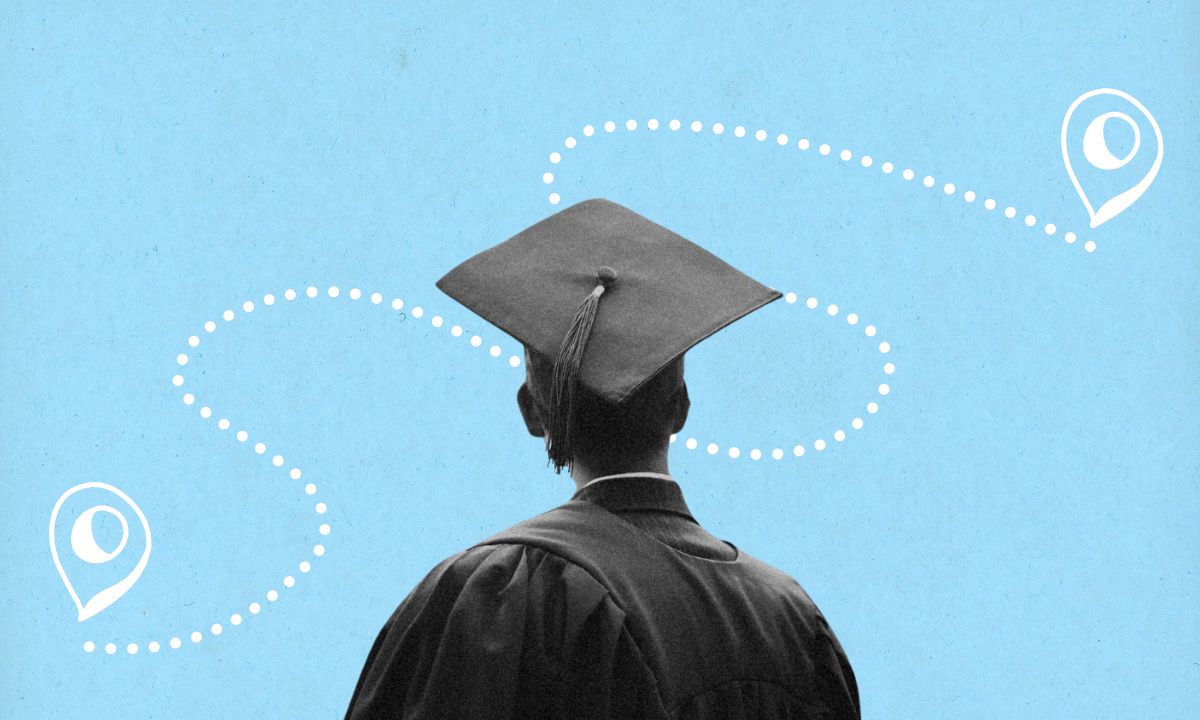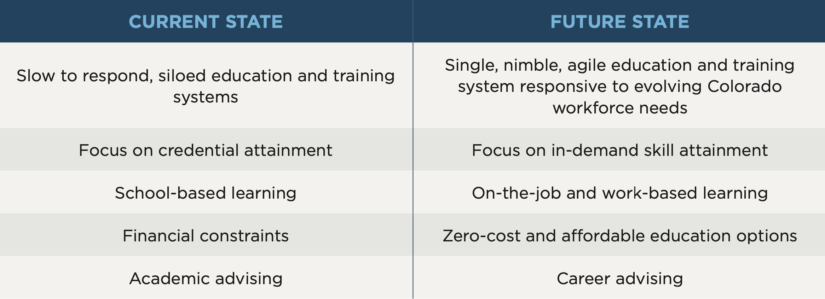Jared Polis: How Blurring the Lines Between High School, College and Careers Can Set More Teens Up for Success
In offering students more opportunities to gain skills, we can save time and money, create a better-trained workforce & better support our businesses.

Get stories like this delivered straight to your inbox. Sign up for The 74 Newsletter
This essay was originally published as part of the Center on Reinventing Public Education’s 2023 “State of the American Student” report. As part of the effort, CRPE asked 14 experts from various sectors to offer up examples of innovations, solutions or possible paths forward as education leaders navigate the current crisis. (See all the perspectives)
I’ve always believed that education is the closest thing we have to a silver bullet for life success. A quality education leads to greater personal earnings, better health outcomes, a stronger economy, and lower community crime rates, among many other benefits. For example, bachelor’s and associate degree holders take home median weekly earnings of $1,334 and $963, respectively, compared to $809 for their peers with only a high school degree, according to the Bureau of Labor Statistics.
But as the global economy rapidly evolves, we must rethink the way we educate students and our workforce. A fragmented approach—where high schools, postsecondary institutions, and employers all work in their own silos— shortchanges everyone.
We need to create more seamless pathways from school to careers. In Colorado, for example, 91.4% of jobs that can support a family of three require postsecondary education or some form of training or certification in high school beyond diploma requirements. Conventional four-year degrees alone cannot solve this problem, as more and more jobs value skills over a formal college diploma.
Blurring the Lines
In Colorado, we refer to breaking down silos as “blurring.” Advanced degrees and credentials are now table stakes to participate in the modern economy, but accessing them usually requires students to persist through four years of high school work that often doesn’t feel relevant to their futures. Then they proceed to postsecondary programs where they must take on debt, pay tuition, or forgo work while they pursue credentials. Blurring can make high school more relevant and credentials more attainable for all students.
While Colorado has seen one of the strongest economic recoveries in the country following the pandemic, employers across our state still struggle to find the right talent for their available jobs. One factor: we have historically asked students to make choices about their careers after leaving high school, often without the appropriate data needed to identify industry-specific needs or what kind of return on investment a particular pathway will afford.
That’s why we have been laser-focused on blurring the lines between high school, higher education, and the workforce. Students and young professionals deserve more opportunities to gain skills.
By increasing those opportunities, we can save people time and money, create a better-trained workforce, and better support our businesses.
Today, roughly 53% of high school graduates in Colorado earn college credit or industry credentials through dual and concurrent enrollment while in high school, saving them an estimated $53 million annually on tuition costs. A growing number also participate in apprenticeship and “learn while you earn” models.
Innovative intermediaries, such as CareerWise Colorado, are working between education and business to provide youth apprenticeship opportunities in industries such as banking, finance, health care, insurance and advanced manufacturing.
Additionally, Pathways in Technology Early College High School models (PTECH) provide students the opportunity to learn on the job while in high school, earn an associate degree and be first in line for those jobs following graduation.
However, more students can and should be participating in these opportunities. Our vision is that every student will graduate with a diploma in one hand and a certificate, degree, or meaningful job experience in the other.
That’s why the Colorado Legislature created a task force that brought together partners from schools, postsecondary pathways, and industry. Its mission was to “develop and recommend policies, laws, and rules to support the equitable and sustainable expansion and alignment of programs that integrate secondary, postsecondary, and work-based learning opportunities.”
This past year, the task force identified several impediments to the various pathways available to students: lack of awareness, confusion about program goals, affordability, and inadequate data on outcomes. Schools are already working to better target and maximize their resources, and the task force will present a final report with clear recommendations on how to scale this work by the end of 2023.

A Skills-Based Ecosystem
The four-year degree is still a great choice for many students, but we must also create opportunities for those who choose a different path. That’s why we are creating a skills-based ecosystem, where people of all ages can get the skills they need to fill jobs that will earn them a good living and support their families.
To lead by example, we implemented skills-based hiring practices for our state workforce, and we expanded apprenticeship opportunities within state government, implementing best practices already in place at many major employers in the state.
Colorado has removed or provided flexibility on degree requirements for most state jobs, such as entry-level positions, project management, IT and supervisory roles, replacing them with the opportunity to show experience and transferable skills. In the private sector, companies such as Google and Slalom Consulting now list degrees as optional for most positions in Colorado.
To ensure all students have access to these various pathways, Colorado has created a zero-cost credential program, making it completely free to pursue a number of healthcare certifications at any of our community and technical colleges. More than 1,000 students have taken advantage of this program, and we are working to expand it to other in- demand industries, such as early childhood and education, law enforcement, fire and forestry, skilled trades and green jobs. We also created a new state scholarship program that will provide eligible students who graduate in 2023-24 with $1,500 each to pursue higher education or postsecondary training.
We have also implemented a series of programs that help ensure our agencies, schools, and industry partners work together to break down silos and integrate our “blurring the lines” vision at a statewide level. In recent years, we’ve created other programs that encourage agencies, schools and businesses to collaborate in ways that offer students more opportunities to pursue credits and degrees. Those include expanded state apprenticeships, more scholarships for students in high-needs fields, and an $85 million grant program that helps businesses work with schools to grow their own talent.
All of this work creates a more integrated talent pipeline that serves students, professionals, and businesses alike. Blurring the lines means creating new opportunities, taking a bold new approach to training the workforce of tomorrow, and meeting Coloradans where they are—to help everyone achieve a successful future in a career that they love.
See more from the Center on Reinventing Public Education and its 2023 “State of the American Student” report.
Get stories like these delivered straight to your inbox. Sign up for The 74 Newsletter

;)
